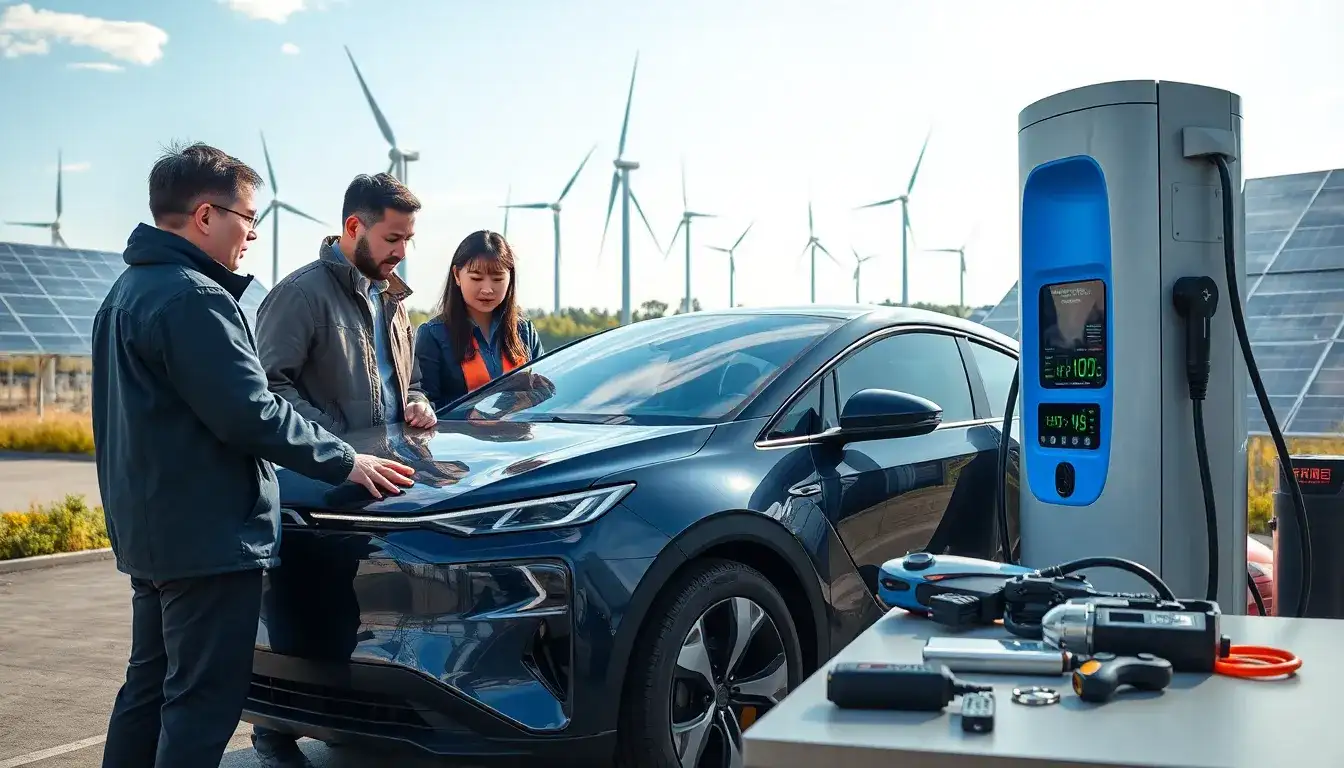
New Energy Vehicles: Collaborative Innovation Leading to High-Quality Industry Development
Against the backdrop of rapid development in China’s electric vehicle industry, an in-depth discussion on promoting collaborative innovation across the industry chain and achieving high-quality development took place at the China Electric Vehicle Hundred People Forum (2025). During the conference, Xin Guobin, Deputy Minister of the Ministry of Industry and Information Technology, emphasized that automotive companies should shift their development approach from merely pursuing scale growth to balancing both scale and efficiency. This includes moving from application-driven technological innovations to foundational technological innovations, expanding from a single automotive industry to multi-industry integration, and transitioning from product sales to comprehensive lifecycle services.
In recent years, China’s new energy vehicle industry has made remarkable achievements. In 2024, the annual production of new energy vehicles surpassed 10 million for the first time, accounting for 65% of the global total production, maintaining the world’s leading position for ten consecutive years. In terms of technology, the average range of new energy vehicles has approached 500 kilometers, and fast-charging technology that allows for 80% charge in just 15 minutes has entered mass production. However, challenges remain on the road to industrial development, including insufficient domestic demand, intense internal competition, inadequate mineral resource security, an imperfect battery recycling system, and the need for enhanced charging and swapping infrastructure.
Chen Qingtai, Chairman of the China Electric Vehicle Hundred People Association, stressed the importance of firmly developing new energy vehicles and strengthening top-level planning and guidance. He specifically mentioned the need to accelerate the research and industrialization of solid-state batteries while improving charging facilities, financial insurance, and maintenance service systems to promote the deep integration of new energy vehicles and clean energy. Deng Chenghao, Vice President of Changan Automobile, revealed that a prototype equipped with a solid-state battery is set to debut this year, with plans for gradual mass production by 2027.
Regarding the construction of charging infrastructure, by the end of 2024, the total number of charging facilities nationwide reached 12.818 million, reflecting a year-on-year increase of 49.1%, and the coverage rate of charging piles in highway service areas has reached 98%. Li Bin, founder of NIO, stated that NIO will continue to invest in charging and battery swap networks and has signed a cooperation agreement with CATL to jointly promote the establishment of technical standards and operational network synergy. Huang Xuefeng, Regulatory Director of the National Energy Administration, pointed out that the charging market is still in its early stages and requires innovation to enhance service quality and create a healthy industry ecosystem.
The intelligent upgrade has become another significant direction for the new energy vehicle industry. Academician Ouyang Minggao from the Chinese Academy of Sciences noted that 2025 will be a breakthrough year for intelligent vehicle technology. He emphasized that the current mainstream intelligent driving mainly involves L2+ smart navigation-assisted driving, and multi-modal large models will support advanced autonomous driving technology, although safety and reliability issues still need to be addressed. Recently, several automakers, including Geely and Changan, have released intelligent driving systems. Gao Rui, Deputy General Manager of GAC Group, indicated that advanced driving technologies such as highway navigation-assisted driving and urban navigation-assisted driving are accelerating their adoption in mainstream vehicle price ranges.
To support the development of automotive intelligence, Alibaba Cloud Intelligence will provide redundant computing power to automakers to reduce innovation costs. Wan Gang, President of the China Association for Science and Technology, emphasized the need to build a cloud computing platform based on deep artificial intelligence development to achieve embodied intelligence for connected vehicles. He suggested incorporating intelligent connected infrastructure requirements into urban renewal and construction planning to promote the collaborative construction of digital infrastructure such as 5G communication, roadside perception, and high-precision maps.
In terms of international development, Chinese automotive companies are actively participating in global market competition. BMW Group has partnered with Huawei and Alibaba to focus on intelligent and electric technologies. Simultaneously, Chinese automotive brands are gaining recognition on the international stage, with 24 Chinese brands listed in the “2024 Global Automotive Brand Value Top 100.” BYD has launched its first overseas passenger vehicle base and plans to accelerate the development of products with localized brand attributes. Liu Yang, Deputy Director of the Climate Change Department at the Ministry of Ecology and Environment, suggested strengthening international cooperation to promote key technology and model innovations and expedite the formulation of carbon footprint accounting standards for key products such as new energy vehicles.
Sheng Qiuping, Vice Minister of Commerce, stated that efforts will continue to deepen trade and investment cooperation in the automotive industry, supporting automotive and parts manufacturing enterprises in enhancing international collaboration and improving overseas operational capabilities. Zhang Yongwei, Vice Chairman and Secretary-General of the China Electric Vehicle Hundred People Association, emphasized that building a mutually integrated global automotive supply chain system is fundamental to global cooperation and advocated for the mutual recognition and interoperability of new energy smart vehicle service systems, as well as establishing a secure and controllable automotive data cooperation mechanism.







